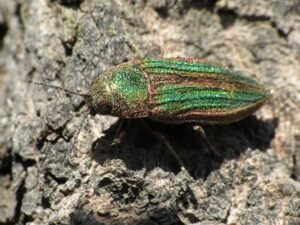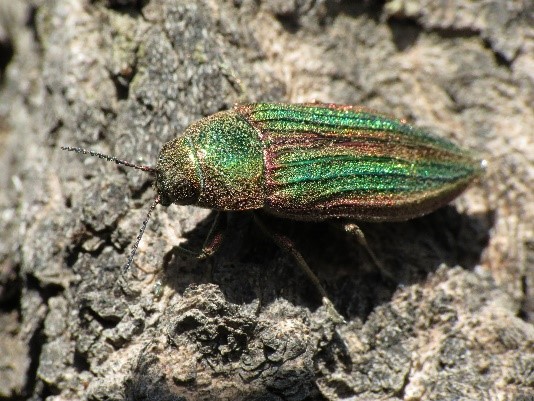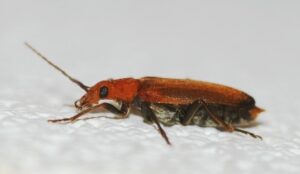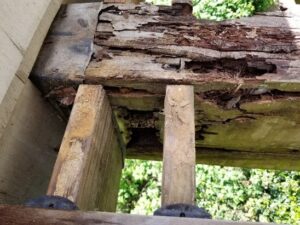Big-Headed Border, or Metallic Wood Borers:
Golden Jewel Beetle or Golden Buprestid
General Description
| · Adults are large (up to 20mm long), brassy green to golden beetle, with blue/purple highlights and coppery orange margins.
· They have elongated hard and flat bodies, nearly oval in shape, but tapered at the hind end into a point. · Five widely spaced ridges occur on each elytron. ·They have serrate antennae.
|

Credit: Katja Schulz |
Life Cycle and Common Characteristics
- In late spring or summer, the females seek out sites where they can lay their eggs in close proximity to wood, such as in bark crevices and scars.
- Eggs are laid singly or in masses, are surrounded by an adhesive secretion, and hatch soon afterward.
- The newly emerged larvae bore into the wood, usually 1 to 2 cm below the sapwood surface where they excavate mines that are enlarged as the larvae grow in size; occasionally, the heartwood is penetrated. Galleries are oval and flat, and packed with fine, light-colored frass. The walls of the galleries are finely grooved by the larvae as they feed.
- Larvae may cause varying degrees of damage, depending on the grain of the wood and the number and proximity of larval galleries. Detection of infested lumber before it is used in construction may be difficult as the flattened tunnels made by early-instar larvae are small (0.5 to 1.0 mm wide).
- Larval stage lasts 2 to 4 years.
- Mature larvae pupate at the end of the larval galleries during late summer, transform into adults in the fall, and overwinter in the galleries.
- In the following spring, adults chew through to the surface, leaving typical oval emergence holes. The foliage feeding causes no significant damage.
- The life cycle of the golden buprestid is so altered that the larvae may live up to 60 years and adults may emerge from the wood at any season.
- Adults are active from February to September, but most common from April to August.
Damage and Economic Implications
- Structural damage or noticeable wood destruction is rare.




